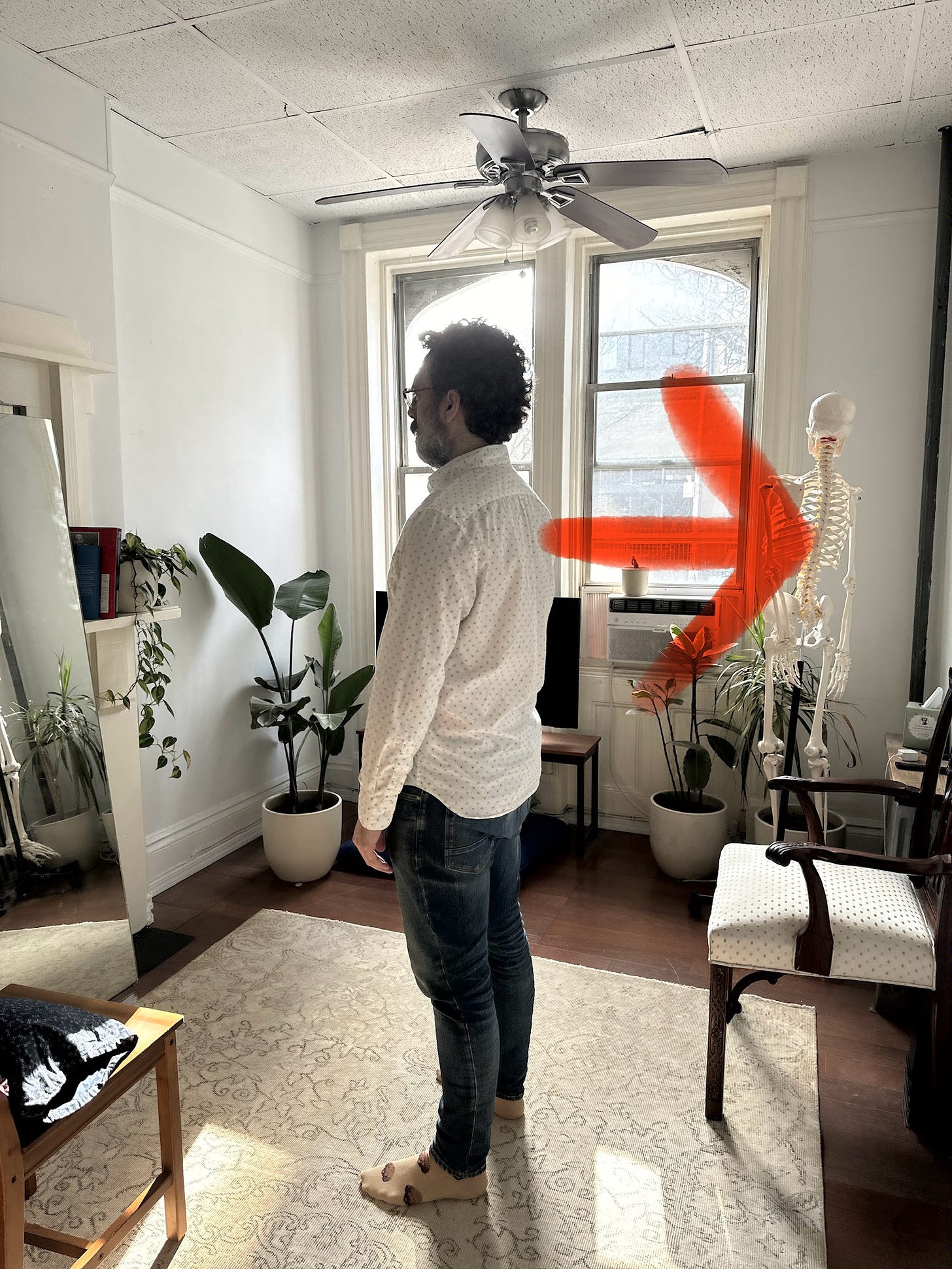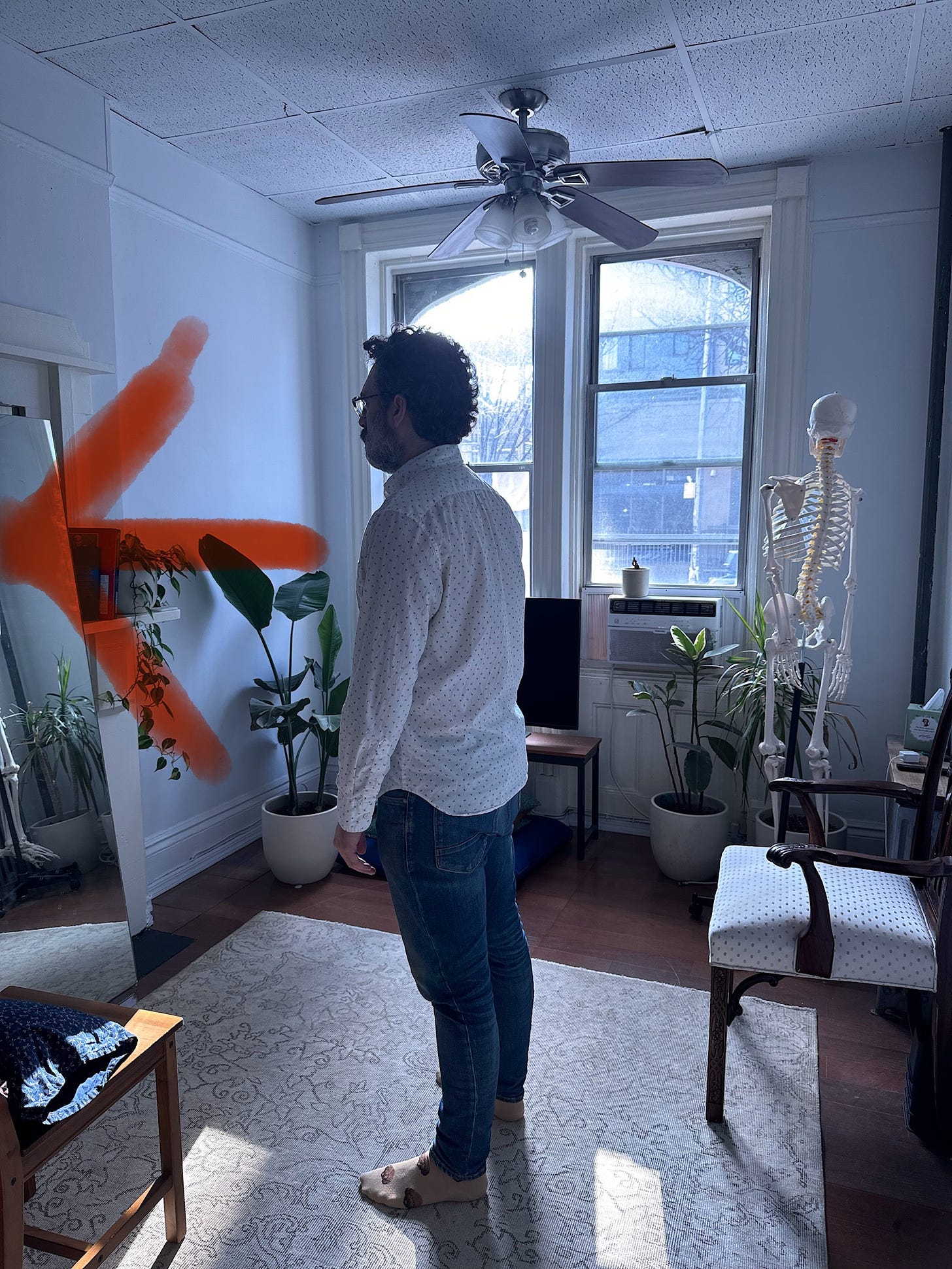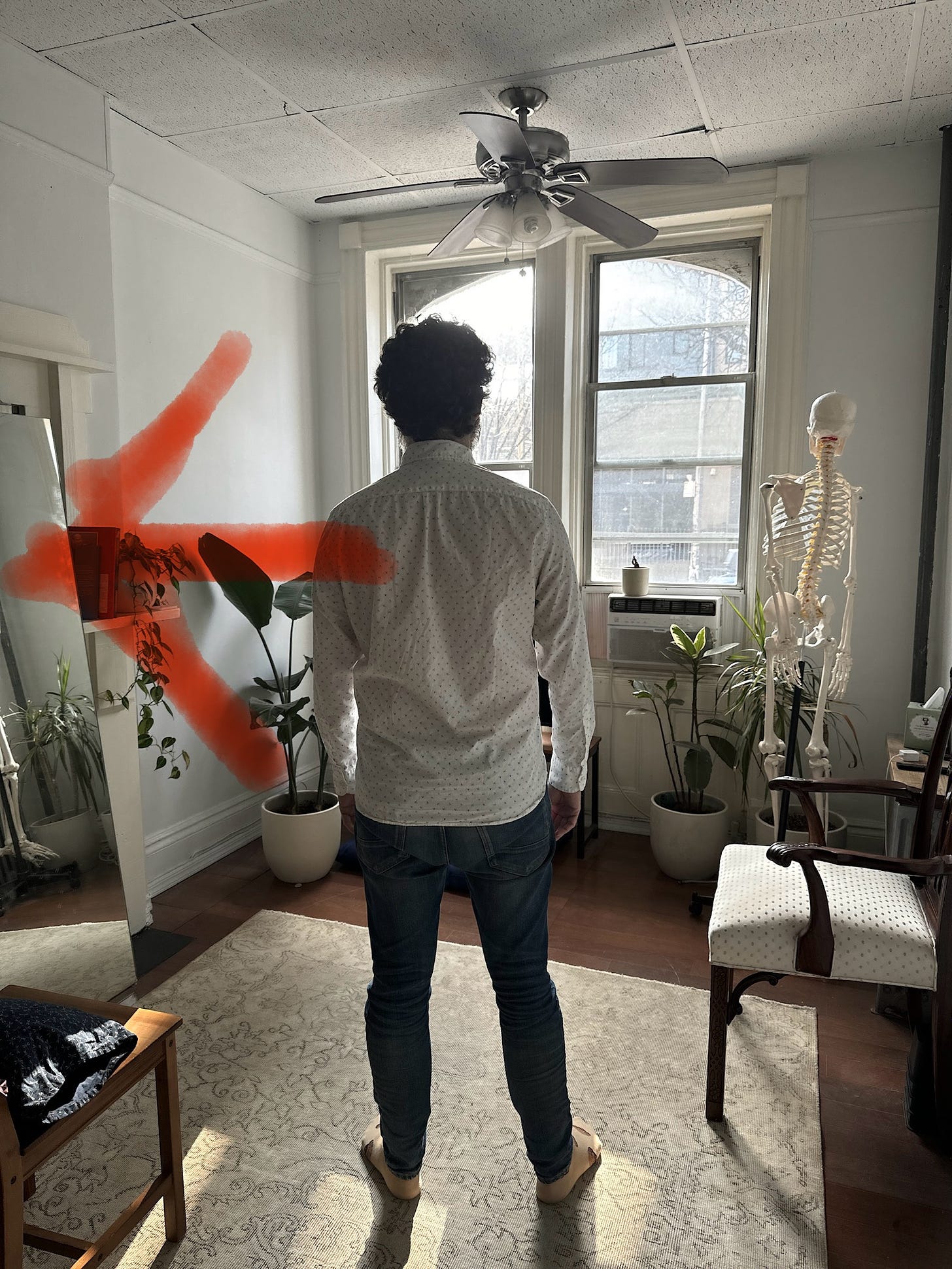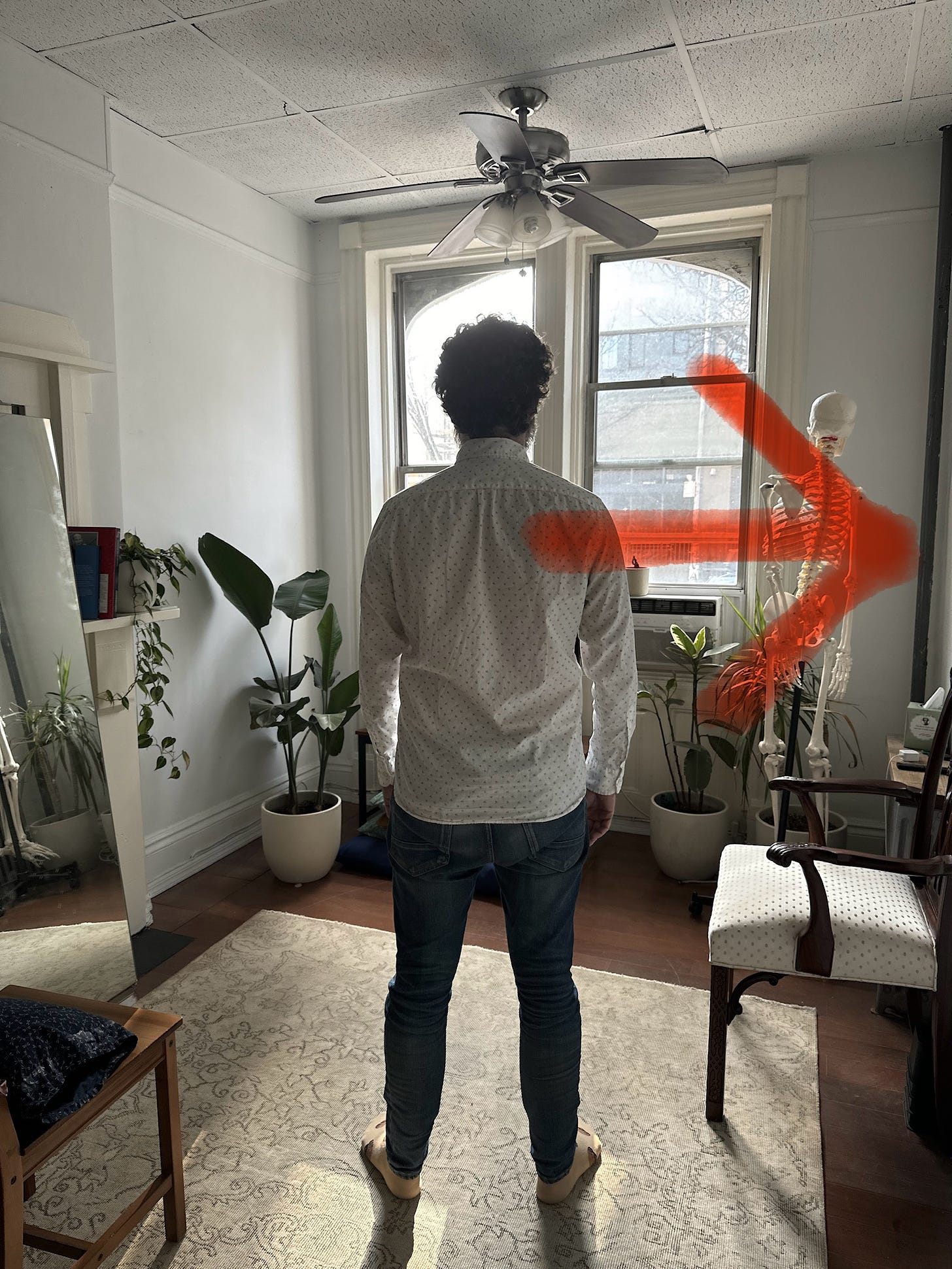Welcome to yet another post in my Primary Explorations series! For any new readers, I strongly encourage you to read each post preceding this one in the series.
As I go through this deep dive, try not to focus on today’s topic with the force of a thousand suns. I’d like you to remember to stay simple, quiet, and additive in your thinking at all times. All that I’m really doing with today’s post is to show you what you might look like if you habitually lean in one direction.
Before I jump to the good stuff (pictures of yours truly leaning), I’ll give a recap of what the Primary Explorations series is covering. FM Alexander describes in his essay the Evolution of the Technique how he has discovered that his voice tends to have less hoarseness when his full stature tends to lengthen. He says that he performs a series of experiments to figure out how to lengthen his stature and discovers that he wishes to have a tendency to:
have a head forward and up relative to the neck
prevent the chest lifting
prevention the arch of the spine.
All of these are tendencies. He is NOT concerned with perfection in any given moment!
In my earlier posts, I’ve given you some images of what it looks like to put your head in various positions so that you have a better sense of what the words “forward” and “up” mean. I’ve also shown you pictures of my spine in a severe arch and a much less severe arch. But a consequence of stiffening your neck and holding your head off balance is that it will create a lean in your whole stature while standing.
Your lean may be small or large. It may be in any number of directions. It could be for any number of reasons. But I first want you to be able to see it in a mirror. Later on, you will be able to correctly feel the lean…and HATE how it feels!**
The tower of Pisa creates its lean by standing tall and having the ground sink underneath it. The more it leans, the more strain it creates on the structure. And without careful maintenance, it will crumble. It was not designed to lean.
You ARE designed to lean. You can create a lean forward, backward, left, right or at any angle from center by holding the head, neck, back, hips, and legs in a particular way. As long as you don’t perpetually stay set in that lean, you won’t crumble. You’re designed to both lean and NOT lean. Variety is the spice of life.
If you do lean, it may have initiated with an injury to a leg or repetitive stain from standing at work all day (health care professionals, teachers, shop workers…this could be you!). Not only will this add strain to the neck and back, but it can also disbalance the shoulders or the hips. For now, I’d like you to be able to see what a lean looks like.
The following images show me leaning at 6, 12, 9, and 3 o’clock respectively. Check them out!
All of these leans felt fairly dramatic to me when I took them. However, they may not look that dramatic to you. Part of the reason that I share these images is that I want you to take the time to see that these leans might not look like that big of a deal. I promise you, each of these leans has locked my head, neck, and back temporarily. These all felt really crappy and I don’t think that the average person on the street would recognise this.
I’d also like to point out that the spine has plenty of joints and is always curved to some degree. Some vertebrae could be pushing forward while others are pushing left or right. The spine is incredibly mobile and all sorts of things can happen over the course of our lives that create some pattern of holding. These images are just here to introduce the idea of a general head to toe lean to you.
You can think of a lean as having an angle and severity. Some people may lean slightly towards 1 o’clock. Some may lean heavily towards 9 o’clock. These leans tend to have an impact on the pitch and roll of the head. It’s all connected and you’ll discover in time how to coordinate it one after the other and all together.
Umm… So What Should I Do??
When you have a minute, take a stand in front of a mirror or take a picture of yourself. With a healthy dose of curiosity, take a look and see if you can see any type of lean. When I was first taken through this exercise in my first lesson, I couldn’t see my lean towards 1 o’clock until Beret pointed it out to me. It isn’t even something that I can see with a quick glance to this day. I always have to take a moment to quiet down and look. There’s no need to rush.
If you see this lean, please don’t panic and please don’t try to fix it “real quick”. I’ll show you Rocking Games that can help you further explore and reduce this lean later. When in doubt, you can always Walk.
Instead, take your lean as yet another clue for your Sherlock. Your lean is part of the reason why the chest is lifting and the spine is arching. It is most likely due to pushing the head in a particular direction but it could be from any number of injuries. You don’t need to know what to do about it right now other than SEE IT, NAME IT, and KNOW IT.
Have you found a lean in yourself? How would you describe it? Putting feelings into words is always tricky, but I’m interested in hearing from you in the comments!
** This is a great thing…it means that you are going from the unknown to the known…it means that you are learning!!! :)









Your "leaning back" doesn't capture what I so often see in both women & men. That is, a leaning back while collapsing the pelvis back & down in the classic position of ... a male peeing. A functional arrangement for males that becomes ongoing-pattern. Why it occurs also in women could be related to the slouchiness of contemporary furniture and/or attempts at appearing "casual"
It’s hard to tell how I am leaning so I tried leaning in each of the ways you illustrated. They each felt awful!